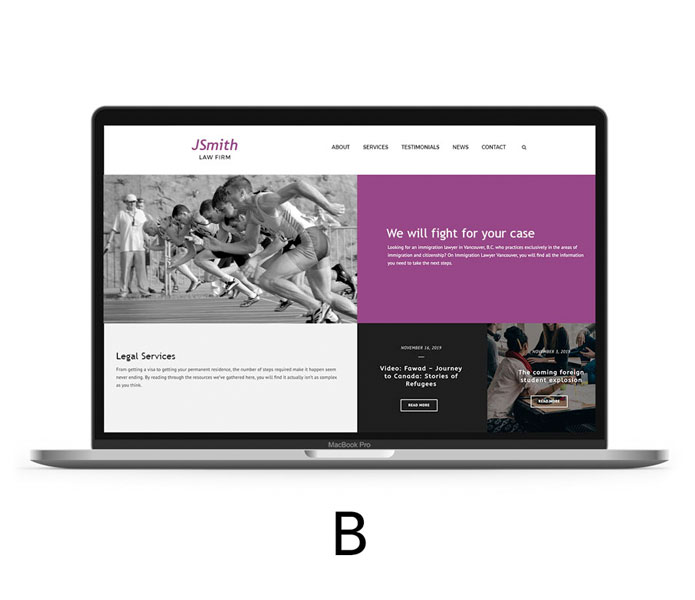
BLUF (Bottom Line Up Front)
Purchasing decisions, among other things, can be influenced substantially by subtly influencing peoples’ attention.
People are primed to attribute importance to salient (prominent) things, and so putting people in mind of comfort by showing them an image of a cloud will make comfort a more important buying criterion.
People are also primed to attribute causality to things that are focal. So if you can make people focus on something, they are more likely to believe that thing is the proximate cause of some effect they are considering.
Introduction
What if you could change what product attributes customers value simply by adding subtle cues in a website’s background images? What about exonerating an innocent person by widening the camera angle during an interrogation? Two principles explain the power of both and much more:
Principle 1: What people view as salient they also view as important
Principle 2: What people focus on they are more likely to view as causal
An understanding of these two psychological principles can be used to market more effectively.
These two principles are eloquently explained in the book Pre-Suasion, written by psychology and marketing professor Robert Cialdini. For a full treatment, I recommend the book, for an overview and some applications in marketing, read on!
Evidence of “What’s Salient is Important”
In a study published in the Journal of Consumer Research, Mandel and Johnson demonstrated that visitors to an e-commerce website can be primed to be more receptive to either low-cost or high-comfort value propositions simply by changing the background image of the website’s splash page from coins to clouds1. This priming had a significant impact on purchase decisions: the cheaper of two sofas held a 55.8% market share among those participants primed with the coin background, but only a 38.7% market share among those primed with the cloud background1.
Evidence of “What’s Focal is Causal”
The policies of the American President are often over attributed as the cause of the performance of the U.S. economy3. This is because the president is the most prominent person in the country. For example, if people spent more time focusing on technological advancements they would attribute much more causality to the latest iPhone release.
Another interesting piece of evidence comes from the field of criminal justice. When a jury or judge is hearing evidence that a confession may have been given under duress, police interrogation videos are prejudicial when the camera angle focuses on the person being interrogated. Both juries and judges assign responsibility for the confession to the suspect more often when the camera focuses on them than they do when the camera focuses on both parties4.
Applications in Marketing
Both principals can be applied to make your marketing messages more effective. To quote Cialdini:
“…because what’s salient is deemed important and what’s focal is deemed causal, a communicator who ushers audience members’ attention to selected facets of a message reaps a significant persuasive advantage: recipients’ receptivity to considering those facets prior to actually considering them.”2
Applications of Salience Implying Importance
After establishing your product/service’s unique value proposition, you should find multiple ways of priming your customers to consider that benefit.
An accountant whose value proposition is faster turnaround than the competition would benefit from A/B testing a version of their landing page that includes images and wording that prime users to consider time constraints. For example:

VS

Similarly, a law firm focusing on its competitiveness in court could prime website users to be more competitive with images invoking competition, priming customers to value competitiveness in a lawyer. The firm might A/B test the following landing pages:

VS

Applications of Focus Implying Causality
The most straightforward use of the principle of “what is focal is causal” is to demonstrate true causality. For example, the website of a financial planner or bank–both of whom have an interest in their clients saving more money–might use a retirement calculator to demonstrate the importance of an individual’s savings rate on their financial outcomes.
If you want to demonstrate causality, get the cause into focus.
Nefarious Applications in Marketing
While the “what is salient is important” principle has limited nefarious power, the “what is focal is causal” principle is often employed by dishonest companies effectively. Think about it, would it be easier for a financial advisor to convince you that a) the nice binding on their monthly reports is really important (instead of a triviality), or that b) their double-digit returns in the past five years is caused by the genius of their active manager (instead of the double-digit returns of the overall stock market). We are much more likely to be tricked into misattributing causality than tricked into desiring the trivial.
There are many other examples of this sort of trickery, like a company selling an ineffectual diet product that advertises the results of their customers (who happen to also have started exercising and eating better).
How can you use these principles?
So how can you use these principals? Whether its a/b testing landing page designs to change buyer behavior, or a/b testing advertisements, we can help. Get in touch with us using the contact form below!
References
- Mandel, N., & Johnson, E. J. (2002). When Web Pages Influence Choice: Effects of Visual Primes on Experts and Novices. Journal of Consumer Research, 235.
- Cialdini, R. B. (2018). Pre-suasion: A revolutionary way to influence and persuade. New York: Simon & Schuster Paperbacks.
- Timing is everything. (2014, August 09). The Economist.
- Police-Induced Confessions: Risk Factors and Recommendations. (2009). American Psychological Association Retrieved from https://web.williams.edu/Psychology/Faculty/Kassin/files/White Paper online (09).pdf



